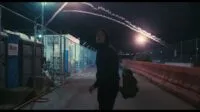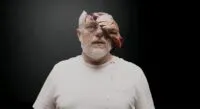I love a good revenge thriller: revenge often seems to give a rich tension to a film, and a motivation viewers can get behind. So I relished the chance to talk to Tom Botchii, whose film Syphon wasn’t quite so straightforward.
Described as a “cat-and-mouse vigilante action”, I asked Tom how it came about that the film was submitted to Grimmfest, a largely horror event. “A lot of the horror-based festivals show genre films in general,” he said, “but you never know which fest is leaning in which direction; some are like ‘strictly horror only, that’s what we do’. I went to Grimmfest previously and saw a great action film there, so it felt like I should talk to them about the opportunity to send this one.”
There’s certainly enough tension, blood and violence you can almost feel; so perhaps Syphon can be called horror-adjacent. “There’s definitely elements that are drawn from various genres,” Tom suggested, “even a couple of goofy comedy moments. But yeah, action with gory fun.”
Personally, I found the dynamic between the two main characters compelling; Shuhei Kinoshita as Jun and Jeffrey Decker as Teddy: it zig-zagged with surprises and changing moods between them both, contributing to a tense and intriguing tone. It felt like that was due to more than just the writing so I asked Tom if that tone also involved a collaboration with his composer or others in his team. “I’m not sure if I got it right, until I hear it from viewers,” Tom said, “so thank you. But yes, there’s a big collaboration. I wrote the film, but I was also responsible for editing, so I was able to tap into the feeling of the script and make sure it can be held all through the edit. Guilherme Senff’s music, sure, was a factor too, and definitely the cinematography. I worked with David Christopher Pitt on that, and one of our goals was to get things to feel almost aggressive and yet at the same time with a professional presentation. Sometimes when the goal is aggressive, camera shakes and so on are added, to give the film an uneasy feeling; but I was after a sharp, clean look this time. Maybe next time I’ll go messy and ugly, remove the clean. I think a lot of people aren’t into shaky-cam, and I’m a proponent of that; you want to feel uneasy, but as long as it doesn’t make you queasy too! For me, it’s about designing the editing and the shots you use to feel chaotic: you don’t necessarily have to see chaos. That was part of it as well, so a collaboration between all of us.”
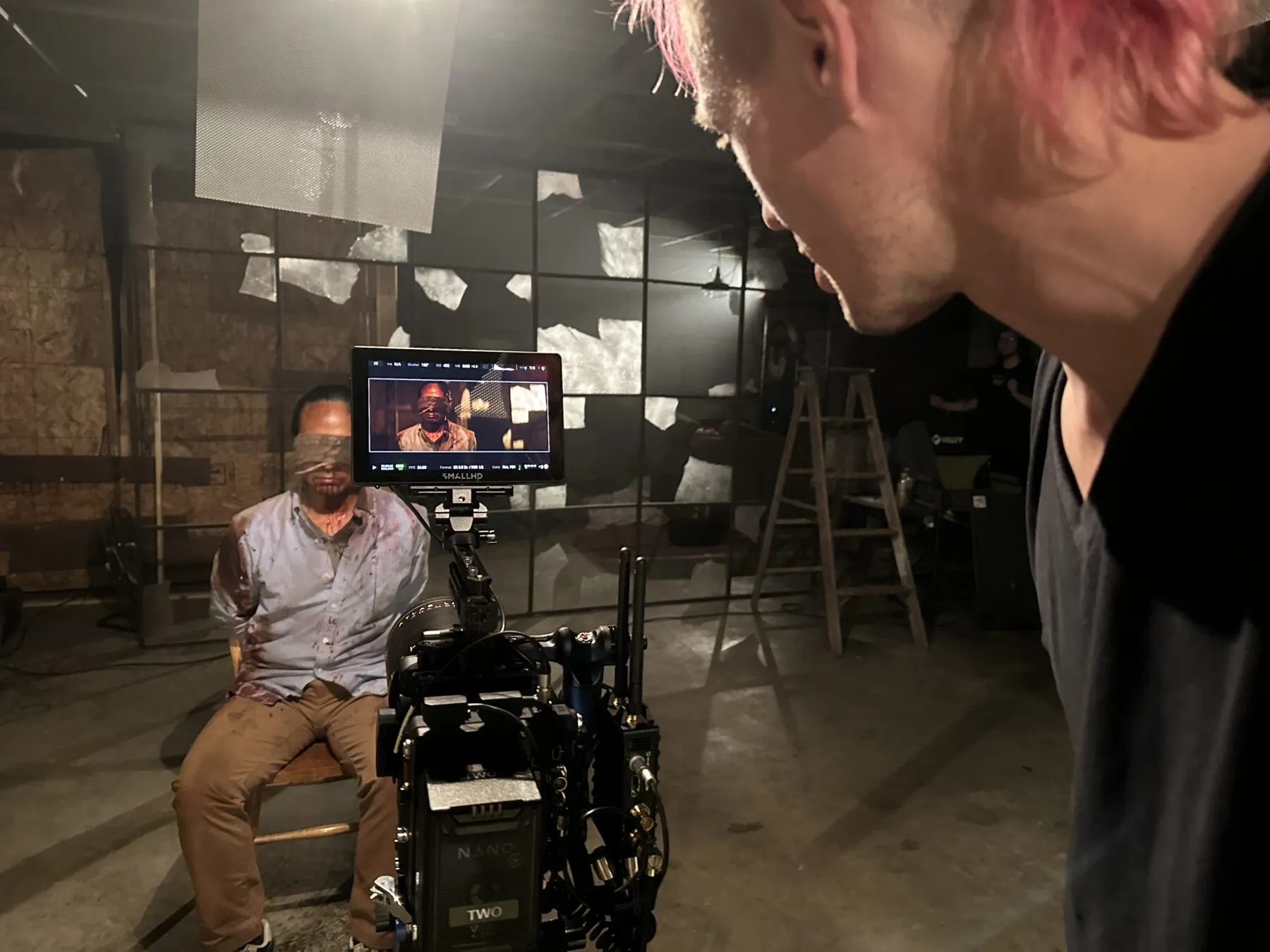
Then I had to move on to the meaty topic of revenge; clearly the central theme, but different from many other films I’d seen in that it’s not conducted in one linear direction: it has a mutual (not quite “mutually assured”) nature. I asked Tom his intention when he set out to make this story his own amongst revenge tales. “My intention was two-fold,” he said. “Right now, if you were to go onto X, you’d see a lot of people yelling; just yelling and targeting others, with no channels for response or real conversation. People scream into the void ‘you’re guilty because I associate you that way’; and I thought that would be really interesting for characters. As a theme, that would be really interesting: what if it was a revenge film, but no-one’s right? When someone goes to prison for murder and it’s apparent later on that the victim doesn’t necessarily feel vindicated, or that they’ve had justice; the person they lost is still gone. So there isn’t the clarity one might expect that after getting revenge, a person feels like they’ve won. Nowadays there is a competitive edge in the world, about shouting the loudest, rather than reaching a true conclusion; and I thought that would be really interesting to put in an action film based on a cat-and-mouse revenge.
“There was a two-fold message, the other thing being that it doesn’t matter how vicious each side looks but there is always another side to the story. Often films present Johnny Good-Guy and Johnny Bad-Guy who simply smash together, and I always wanted to know more about Johnny Bad-Guy; why is he bad? And why is Johnny Good-Guy so good, like what they call ‘white meat baby face’ in wrestling. I wanted to explore the other side of someone’s story who appeared to be the beacon of destruction. There’s a lot that happens in this film where we see things change and some of those reasons revealed.”
I wasn’t sure if the big question was wise or not, but I asked Tom anyway: does he think revenge is ever justified? “Oh man! A lot of people would say ‘no’, but absolutely!” he laughed. “Just kidding. There’s a Seinfeld line that I think goes ‘the best revenge is living well’, and that’s kind of how I feel: the best revenge is working on yourself, and ending up more content and happy than you were before. Better than, like, slashing someone’s tyres!”
I couldn’t help remembering the line quoted in a favourite book of mine (Dirty Weekend, by Helen Zahavi): “Have patience, and the body of your enemy will be carried past your door.”
“Yeah that’s true,” said Tom. “Maybe that’s a better form of revenge: pent up patience,” and we laughed again before returning to the subject of Syphon.
Considering Tom Botchii wrote, directed, edited, essentially made the film, I asked him how much it evolved from the original script to the final output. “Doing an indie film, you’re working with limited cast, crew and budget,” said Tom, “and originally, what I had laid out was a lot of elements that kind of paid homage to other action films that had inspired me. But then as we made it, we realised we didn’t have time or budget to do everything we wanted. For example, there’s a scene in the film which involves a break-in to a very extravagant-looking home; and throughout that scene in the script originally, there was a layout that referenced Enter the Dragon with mirrors and expensive chandeliers. We were going to shoot through the glass with a full fight scene in reflection: it was going to be so unique and exciting! But then we got there and realised there was no way we could cover all those mirrors and didn’t really know what we were doing when it came to a Dragon homage. So just punch and go instead! There were a few things like that going from script to execution.”
I guess you work with what you’ve got on the day, right? “Exactly,” Tom nodded.
Syphon involves a computer hacker, so I asked Tom whether that required a lot of research, to get into his world and present it in a believable way. “I tried to research as much as I could, but ultimately the main thing I learned was that hackers use PCs.” Again, Tom laughed: a simple discovery! “I think a lot of people, when tackling a period or niche piece, try to get every detail right; and yes, that is my approach, but also don’t forget: movies are fake. At the end of the day, this is about the fisticuffs, the kicking and punching, and – of course – understanding the characters; not about getting the right computer model down. But originally, I was going to film with one of the characters using a Mac, and it was the perfect kind of computer to find plastic models on the internet, so if you were to destroy it in a film scene, you could quickly replenish and get a bunch of different shots, so I really wanted to use the Mac. But research told me that no hacker or cybersecurity analyst has ever used a Mac: they tend to be PC-based and work exclusively off the grid as we understand it. So that made it a lot harder to find replicas of the Toshiba laptop that I could smash up in the film. But OK, so be it, we had to try. We actually built plenty of fake façade PC models, with breakaway glass in certain scenes. That made it a little tougher, but I find it kind of funny that a simple bit of knowledge – hackers don’t use Macs! – made such a difference.”
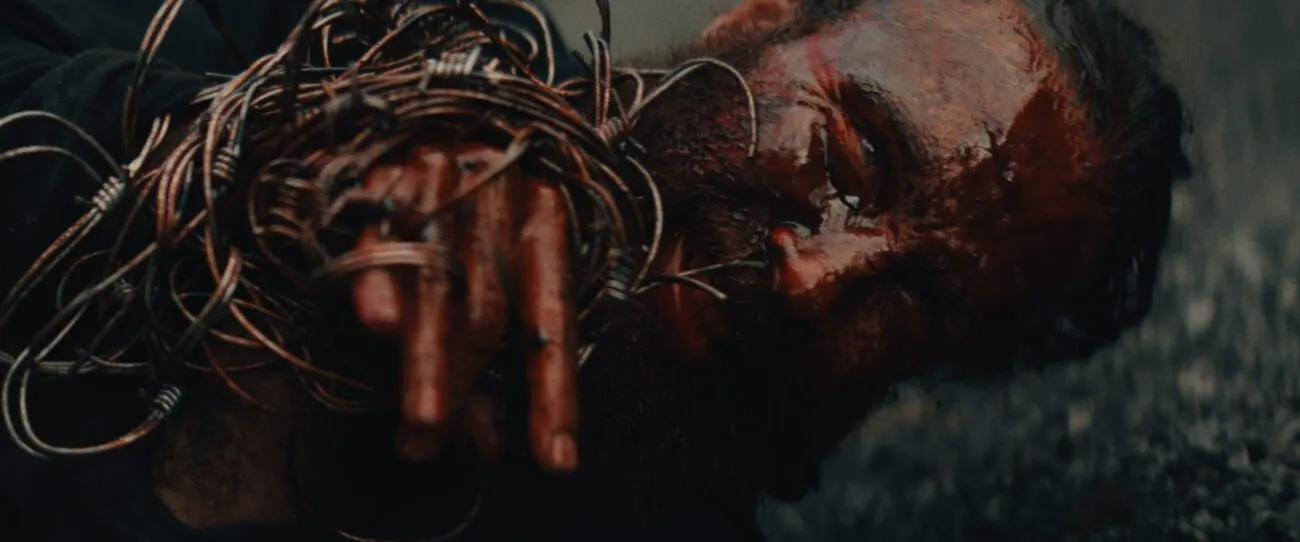
As Tom had alluded to earlier, Syphon’s revenge theme relates to there being more than one side to every story, which can be described as a timeless idea. That said, the content is firmly set now in this “digital age”. “I think so, yes,” Tom agreed, and as he went on it was clearly not just about the computers. “Right now, there’s a lot of targeting. Where I am in California, there’s an epidemic of attacks on the Asian community. It’s still happening, maybe not as high profile as it was. I’m an immigrant, from Poland originally, and when I was growing up some of the first friends I ever made were from the Asian community, so I saw this every day in the playground. I was lumped in with them because I was an immigrant, therefore ‘other’ and ‘different’ from the Americans; so I saw ugly side of society, myself. I thought it would be an interesting presentation into this world, especially with targeted, aggressive yelling into the void that we see online.”
I had found it interesting while watching the film that the cultural difference between the two main characters was barely mentioned at all, and I had wondered at the time if that was deliberate. “Yeah, I feel like their dialogue reflects on each other as well as on themselves,” Tom said. “It’s like you’re rolling on a sphere, and they hit each point – one character feels like the other and vice versa – as the film plays out.”
I observed: Jun and Teddy seem to accept each other for who they are, but not for what they did. “Yeah, exactly,” said Tom. “And I think there’s a lot of that in the world, too. I mean if you understand me, you understand my action; but many people are judgemental, like ‘no, I maybe understand you, but you’re still guilty’. It’s an interesting framework in general.”
The cultural difference led me to raise another point: I watched Promising Young Woman just a couple of weeks ago (another film with somewhat muddy motivations), and I wondered whether a version of Syphon with characters of two different genders would have been too confused. “Oh yeah, the issues and dynamic would have changed quite a bit,” Tom agreed. “Right now, the two characters are theoretically opposed in stances, and I think it would be a little tougher to do. What was that recent film with Kyle Gallner where they did that?” (I think he was referring to Strange Darling.)
“In some ways the story could be more intense, but it could be an interesting challenge to pull off,” Tom mused. “Maybe it would be better, maybe worse in some ways; interesting observation.” I recalled talking to Julian Maury a couple of years ago, ostensibly about Kandisha, and he had talked briefly about making Inside purely to explore a plot involving two women; models and tropes are worth playing with, after all.
I confessed to Tom that my interview homework had not extended to his earlier film, Artik, though I had read it had similar levels of violence and tension. Tom was back to smiling: “there are some confrontations in that film, yes. Artik is definitely a horror film, and it does have a lot of action elements, but this one shows I’ve matured as a filmmaker: there was a lot more time to pull off this one. Everyone’s first feature is about ‘wow you did it!’ versus the goal of truly making the best product. My first feature was about surviving, and it’s such a hard undertaking: it’s easy to feel like there are so many lessons and rules you have to follow, but that’s not the best way. I fell into that, and what’s cool with Syphon was that I was able to think to myself ‘what did I not like about the first film? Part of it was about the way it was done, so why don’t I do this the way I should not do it, just try it that way and see.’ It turned out that way was fun: I kept it to a crew of six people, nobody else; I don’t care how many people are supposed to be involved, I wanted it as tight and low budget as possible. That made it a better production, and so much more fun, with less anxiety; and what was interesting was we tried to pull off bigger things, but because we were working from a smaller base, it was actually possible to do them. A lot of times, when you have twenty or thirty people in set, it’s hard to pull off a stunt: you have so many people and steps, and things involved. But in contrast, when you figure out how to do it creatively, with just, say, four people, you can film in a way that it looks really vicious but it’s not, you move so much quicker and you’re able to get so much more producing out of the way and just get it done.”
Considering there were only three main sets and two main characters, Syphon was almost a piece of theatre. “Exactly,” said Tom. “In a way, the scenes that played out in the garage are meant to feel that way, like it’s a play; and some people have said that’s the tone they get. It moves from traditional action to a play, then swerving to action again. I thought it would be an interesting presentation of the ideas.”
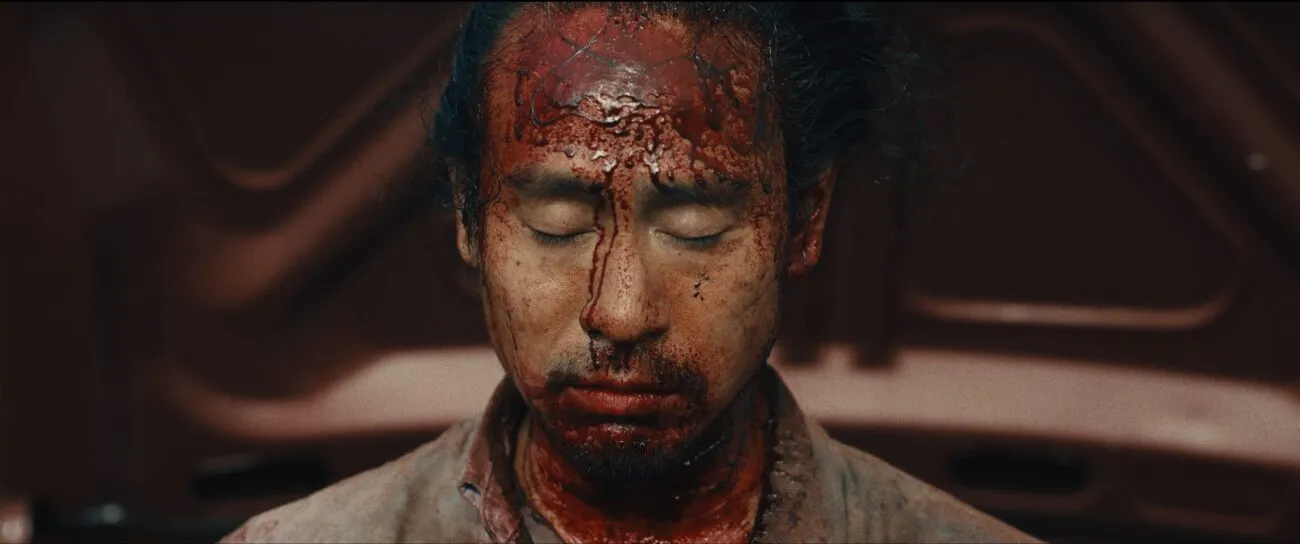
Tom mentioned the garage, and I remembered something: when Jun was tied there to a chair, I couldn’t help but wonder if something like what I saw in Reservoir Dogs was about to happen. I asked Tom whether there were influences like that in Syphon. “Well classics like that are always there,” he admitted, “but you can’t just veer away from them. You sometimes have to instead ask yourself what you can do differently with that situation. It’s based on how you decide on your characters. For example, Shuhei’s character – the one in that chair – he has an interesting ‘return to centre’ meditation that he does, almost to take control of the world and bring calmness back to his life. That was my answer to the question of what I could do differently with someone tied to a chair, how I could make it interesting. Then there was could I take something small, like a water bottle, and make that threatening?” [Reader, yes, he can.]
“So of course there are definitely lots of influences and other things that you might think of when you see that scene, and other scenes. But there’s still an element of differentiation that happens which I’m proud of. There are influences, for sure.”
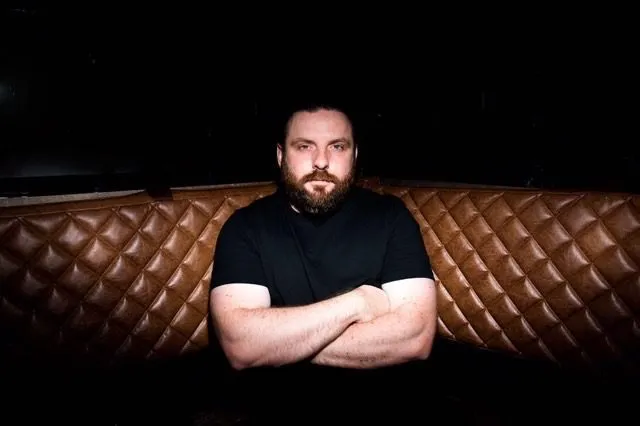
I felt a little ignorant asking my final question, so I’m hoping this will provide good insight for viewers: I asked Tom why he called the film Syphon. “When you syphon fuel from a car, or whatever, you’re sucking someone else’s fuel from them: they can no longer drive or move forward. The idea of this film was that these two characters are almost sucking at the teat of society, and they’re being strung along while taking from others. That was the basis of the title. They are two characters who are a little like vampires, syphoning away everything you have. Or in Teddy’s case, he wants what the other has taken from him, or wants the other to feel the same; it’s like his life force has been sucked away.”
To me, he didn’t want back what was taken, but he was mourning it. “That too,” Tom said, “it’s cool when someone else watches the movie and gives me their take. In some ways that makes it deeper, more philosophical, which is really interesting. Because people didn’t do that with my first film; they were just ‘there’s a lot of blood!’ A little brainless in comparison, I guess.”
The world premiere of Tom Botchii’s latest film, Syphon, will take place on 11 October at Grimmfest, Manchester.
You might also enjoy:
Mayhem Film Festival: Talking Fun and Philosophy with Marc Price
Grimmfest Interview: Talking Tensions and Traumas With Jacob Lees Johnson and Cast
Grimmfest Interview: Talking Poverty and Cultural Richness With Remington Smith


